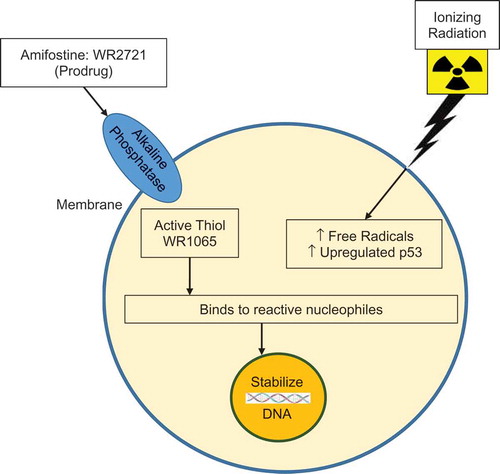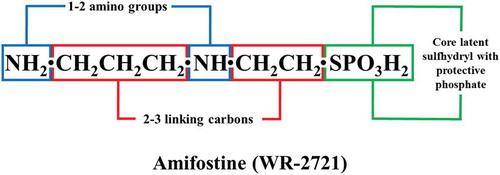Figures & data
Table 1. Indications for which amifostine has received full FDA approval.
Figure 2. Simplified diagram for the mechanism of action of amifostine. Amifostine protects against radiation/chemotherapeutic agent-induced DNA damage. It has anti-mutagenic, anti-carcinogenic characteristics, affect redox-sensitive transcription factors, gene expression, chromatin stability, enzymatic activity, affects growth and cell cycle progression, and prevents the up-regulation of inflammatory pathways.

Table 2. Radioprotective efficacy of amifostine (WR-2721) in mice.
Table 3. Radioprotective efficacy of selected agents.
Table 4. Radioprotective efficacy of amifostine (WR-2721) in rodent, canine, and NHP.

